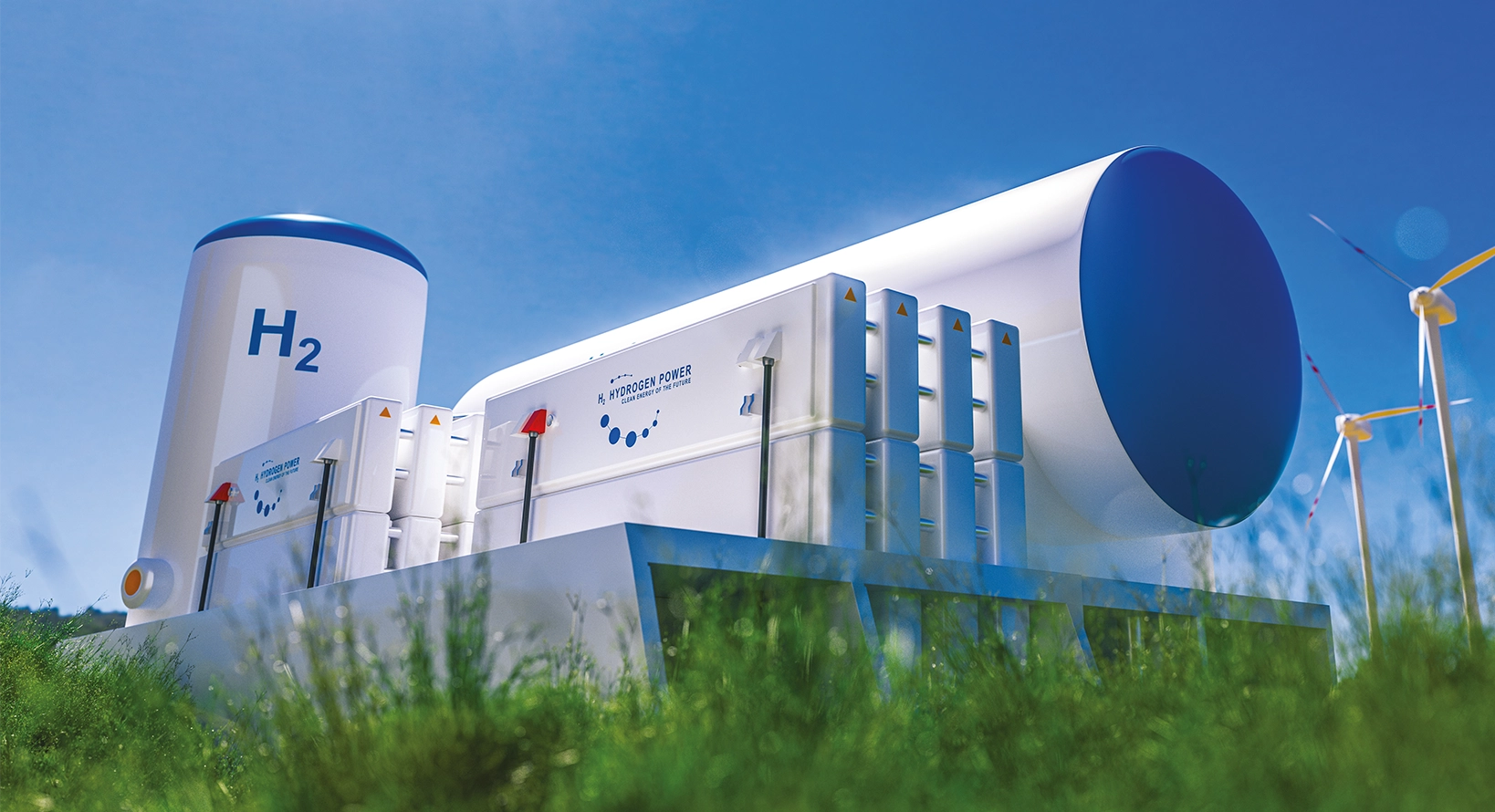A firm working in new energy asked CORYS to simulate a hydrogen charging station for light commercial vehicles. It’s a key milestone on the road to scaling up to supply hydrogen-powered trucks, aircraft, and trains in the future.
To the casual observer, the design, control, and operation of a ‘hydrogen filling station’ might seem simple. Its central feature is a capacity of X tonnes at 700 bar, with vehicles filling up via 300-bar tanks.
What makes things complicated is that the hydrogen in question is produced intermittently and unpredictably, using an electrolyser, wind turbines, or solar panels; moreover, a sophisticated I&C system is required to transfer gas at these kinds of pressures with a high degree of safety; not only that, hydrogen is a temperamental element, one of the characteristics of which is that it heats as it expands!
“A dynamic model is ideal”
“No steady-state software can depict this type of phenomenon,” says Philippe Thiabaud from CORYS. “A dynamic model is ideal. Indiss Plus® has established itself in this respect because it replicates the right degree of complexity, as well as providing a simplified overview of the requirements dictated by real-time control.”
It should be pointed out that the client is not yet at the stage of training future ‘pump attendants’: for now, it’s in the process of optimising instrumentation & control, both for standard operation and for start-ups, shutdowns, incident handling, and so on.
For the CORYS project team, the greatest challenge was to design the pressurised hydrogen behavioural model.
“There are some thirty parameters,” explains CORYS modelling engineer Roberto Olcese. “We’ve drawn on articles by researchers and software that uses standard thermodynamic equations. We’ve also checked that certain experimental aspects are properly reproduced: since hydrogen behaves in some counter-intuitive ways, models that lack sufficient detail tend to predict incorrect physical discontinuities.”
When a slight temperature discrepancy is enough to damage a tank
This scientific work has been indispensable: a tiny increase or decrease in the temperature of hydrogen at 700 bar can be enough to damage tank walls and start a slow leak. That’s why thermal control devices, including a heat exchanger and pressure/temperature monitoring, are present.
Armed with this model, the client – working in the field of new energies – will be finalising instrumentation & control of its charging facilities and launching their rollout. Ultimately, it will be designing larger-capacity stations for HGVs, aircraft, and even hydrogen-powered trains.
“It’s benefiting from a pilot digital plant that’s much cheaper than a real-life installation, and a great resource for studies and engineering,” adds Philippe Thiabaud.
For CORYS, it’s a first reference in the field of energy transition, looking to the day when high-pressure storage of green hydrogen becomes part of more complex industrial pathways.
“Upstream, green hydrogen will be produced using one or more renewable energy sources. Downstream, it may be used alongside CO2 capture from emissions by cement works or steelworks to produce synthetic fuels and methanol, combined with airborne nitrogen to produce ammonia, used in conventional refining as a desulphurisation agent, or harnessed to generate more electricity. This is just the beginning.”





